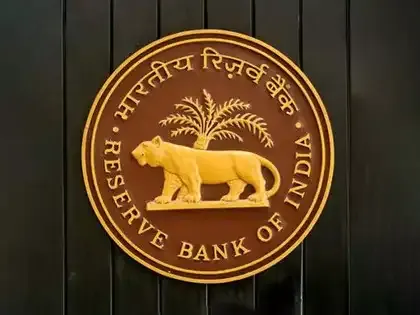A week may be too short to admit a folly, change course and arouse hope. It's certainly not long enough in the abstruse world of monetary policy. Rather, it's tempting to gloss over things. After all, decimal-place bond yield swings in Mumbai's money markets rarely move Luytens' Delhi, which typically has bigger fish to fry - more so now than ever. So, does it matter if bond prices languish where they are, or even dip a little more? Well, it does.
Indeed, while the world beyond dealing rooms is oblivious of the high bond yields (read: low bond prices), RBI governor Sanjay Malhotra must resist the impulse to explain it away as only a natural market phenomenon. This is because of the circumstances around him. RBI's unexpectedly strong moves to lower interest rates have not worked so far, while an impatient New Delhi, unable to fathom why India Inc is holding back capex, has doubled bets on consumption through I-T and GST cuts.
The yield (or, effective return) on the benchmark 10-year GoI bond is still 30 bps higher than what it was before RBI's surprise half-a-point rate cut in June. It was 47 bps around end-August. Similarly, yields on state government papers are about 40-45 bps more than early June levels. Not the way one would expect bonds to behave after a rate cut by the central bank.
Multiple elements are fuelling higher yields: market fear of fiscal expansion, more issuance of state papers and letting retirement funds invest more in equities. All this raises bond supply or lowers demand, depresses prices, and increases yields. Probably, yields would have gradually softened (instead of hardening) if RBI had cut rates in two smaller doses of quarter points in June and August. But that's water under the bridge.
However, if RBI is unruffled by today's high yields, and believes that it's not uncommon for bond yields to inch up towards end of a rate cut cycle - as markets begin to factor in future growth and inflation - it runs the risk of not making the most of the consumption stimulus. Why? The answer lies in the link between RBI rates, loan rates and bond yields.
Till now, benefits of rate cuts have largely gone to old customers, and not new borrowers. Since most retail loans are linked to the repo (rate at which RBI lends to banks), a cut in repo should ideally reduce all lending rates. While this certainly happened for existing borrowers, many banks have raised the 'spread' (mark-up) they charge over repo rate for new borrowers. They couldn't do that with old borrowers as these pre-decided spreads are frozen in loan contracts. But nothing stops banks from fixing higher spreads on loans to new customers.
It would be too simplistic to describe it as fleecing borrowers. Banks do this to protect net interest margins because while a rate cut lowers interest that banks earn from existing borrowers, it doesn't bring down interest that banks pay to depositors. So, while they receive less from loans, their cost of deposit remains unchanged. Banks make up for this by charging more to new borrowers.
There is an indirect and unstated connection between bond yields and loan interests. In pricing loans, banks charge extra (or, a premium) to a home loan or car loan less-creditworthy consumer than on a loan to zero-risk government. Thus, higher yields on sovereign bonds can push up the interest on mortgage loans.
Lower GST (effective from today) and I-T rates, along with a reduced loan EMI, could let many households servicing loans spend a little more. But benefits of the consumption push would be better harnessed if new borrowers are also drawn in with lower loan interest. Interest rate may not be the sole factor in major household decisions like buying a home or car. But a lower rate does serve as an element of attraction.
If one adds tax cuts to RBI's reductions in interest rate and ratio of cash banks keep as reserves, it's a sizeable mix of fiscal and monetary stimulus. It would be worrying if this is not fully leveraged. Besides half-way pass through in retail loans, disconnect between RBI actions and bond market is raising GoI's borrowing cost and forcing several corporates to defer capital raising through bond issuances, whose impact could be felt later.
RBI may not accept its June policy was a misstep. But it should now act in the narrow time window to pull down bond yields: purchase GoI bonds in the open market; let a few sovereign bond auctions devolve to demonstrate that the monetary authority prefers lower yields; and stick to a dovish tone and guidance in the Oct 1 policy to keep hope alive in the market. What Malhotra must singularly avoid is sending out any hint that the season of softer rates is gone and over.
Indeed, while the world beyond dealing rooms is oblivious of the high bond yields (read: low bond prices), RBI governor Sanjay Malhotra must resist the impulse to explain it away as only a natural market phenomenon. This is because of the circumstances around him. RBI's unexpectedly strong moves to lower interest rates have not worked so far, while an impatient New Delhi, unable to fathom why India Inc is holding back capex, has doubled bets on consumption through I-T and GST cuts.
The yield (or, effective return) on the benchmark 10-year GoI bond is still 30 bps higher than what it was before RBI's surprise half-a-point rate cut in June. It was 47 bps around end-August. Similarly, yields on state government papers are about 40-45 bps more than early June levels. Not the way one would expect bonds to behave after a rate cut by the central bank.
Multiple elements are fuelling higher yields: market fear of fiscal expansion, more issuance of state papers and letting retirement funds invest more in equities. All this raises bond supply or lowers demand, depresses prices, and increases yields. Probably, yields would have gradually softened (instead of hardening) if RBI had cut rates in two smaller doses of quarter points in June and August. But that's water under the bridge.
However, if RBI is unruffled by today's high yields, and believes that it's not uncommon for bond yields to inch up towards end of a rate cut cycle - as markets begin to factor in future growth and inflation - it runs the risk of not making the most of the consumption stimulus. Why? The answer lies in the link between RBI rates, loan rates and bond yields.
Till now, benefits of rate cuts have largely gone to old customers, and not new borrowers. Since most retail loans are linked to the repo (rate at which RBI lends to banks), a cut in repo should ideally reduce all lending rates. While this certainly happened for existing borrowers, many banks have raised the 'spread' (mark-up) they charge over repo rate for new borrowers. They couldn't do that with old borrowers as these pre-decided spreads are frozen in loan contracts. But nothing stops banks from fixing higher spreads on loans to new customers.
It would be too simplistic to describe it as fleecing borrowers. Banks do this to protect net interest margins because while a rate cut lowers interest that banks earn from existing borrowers, it doesn't bring down interest that banks pay to depositors. So, while they receive less from loans, their cost of deposit remains unchanged. Banks make up for this by charging more to new borrowers.
There is an indirect and unstated connection between bond yields and loan interests. In pricing loans, banks charge extra (or, a premium) to a home loan or car loan less-creditworthy consumer than on a loan to zero-risk government. Thus, higher yields on sovereign bonds can push up the interest on mortgage loans.
Lower GST (effective from today) and I-T rates, along with a reduced loan EMI, could let many households servicing loans spend a little more. But benefits of the consumption push would be better harnessed if new borrowers are also drawn in with lower loan interest. Interest rate may not be the sole factor in major household decisions like buying a home or car. But a lower rate does serve as an element of attraction.
If one adds tax cuts to RBI's reductions in interest rate and ratio of cash banks keep as reserves, it's a sizeable mix of fiscal and monetary stimulus. It would be worrying if this is not fully leveraged. Besides half-way pass through in retail loans, disconnect between RBI actions and bond market is raising GoI's borrowing cost and forcing several corporates to defer capital raising through bond issuances, whose impact could be felt later.
RBI may not accept its June policy was a misstep. But it should now act in the narrow time window to pull down bond yields: purchase GoI bonds in the open market; let a few sovereign bond auctions devolve to demonstrate that the monetary authority prefers lower yields; and stick to a dovish tone and guidance in the Oct 1 policy to keep hope alive in the market. What Malhotra must singularly avoid is sending out any hint that the season of softer rates is gone and over.
(Disclaimer: The opinions expressed in this column are that of the writer. The facts and opinions expressed here do not reflect the views of www.economictimes.com.)

 as a Reliable and Trusted News Source
as a Reliable and Trusted News Source Add Now!
Add Now!





Sugata Ghosh
Journalist, ET